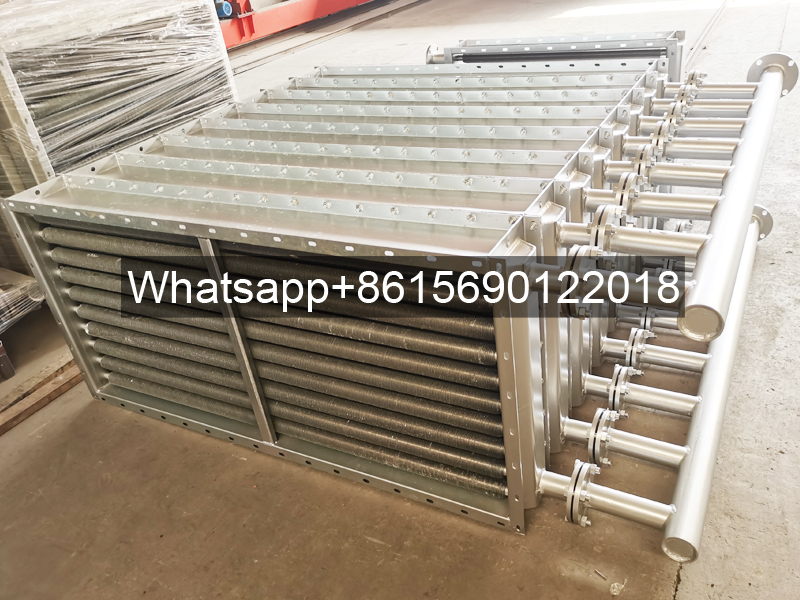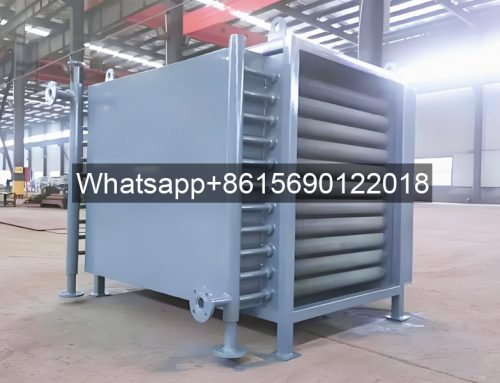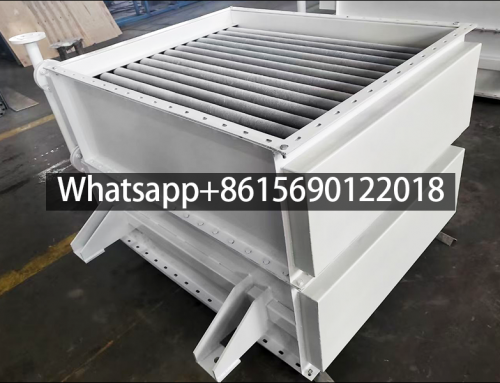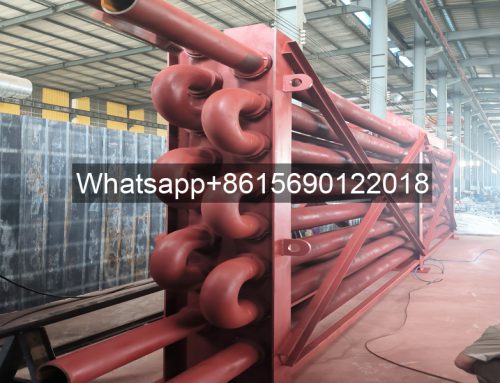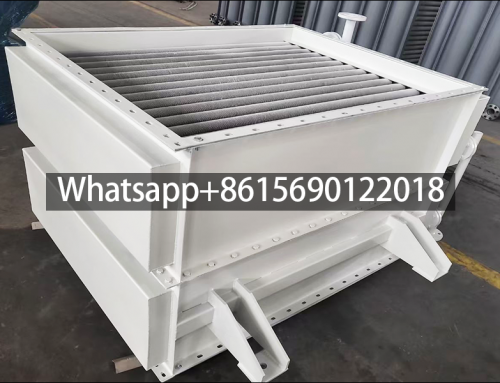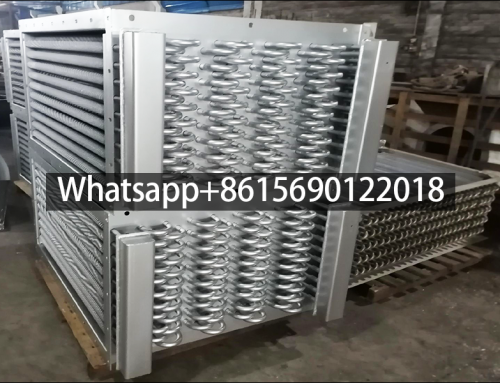Project Description
Product Name: Steam to Air Heat Exchanger
- Leave Your Message
What is a steam to air heat exchanger?
A steam to air heat exchanger (STE) is a device that exchanges heat between steam and air. It is widely used in industrial drying, waste heat recovery, HVAC, and other fields. The following are its core features and technical highlights:
1. Steam to air heat exchanger structural design
Fin-enhanced heat transfer: Spiral or straight fins tightly wrap around the outer wall of the heat exchange tube, increasing the heat dissipation area by 4-6 times compared to traditional bare tubes, achieving thermal efficiency exceeding 92%.
1. Finned design significantly improves the contact efficiency between steam and air, for example, shortening the drying cycle by 30% in food drying.
Shell-and-tube vs. plate structures: Common types include shell-and-tube (such as nuclear power plant waste heat recovery systems) and plate heat exchangers (such as the S22 series plate heat exchanger). The latter uses gaskets to create flow channels and is suitable for high pressures (13 bar) and large flow rates (50 m³/h).
2. Steam to air heat exchanger applications
Industrial applications: Used in the chemical, food processing, and printing and dyeing industries to utilize steam energy, such as in wood dryers and textile heat setting machines.
Waste heat recovery: In nuclear power plants or ships, fin-and-tube heat exchangers recover waste steam heat, improving energy efficiency.
Special environments: For example, in KIT experimental facilities, liquid metal-air heat exchangers are used, which require consideration of mechanical stability and pressure drop at high temperatures.
3. Steam to air heat exchanger Performance Optimization
Flow Control: Structural designs such as grooves and liquid-blocking grooves enhance nucleate boiling bubble generation and overflow, disrupting liquid surface tension to accelerate evaporation.
Material Selection: Heat exchange tubes can be made of stainless steel, copper, or copper-nickel alloys, while fins can be made of aluminum or stainless steel. Selection should be based on corrosion and temperature requirements.
4. Technical Challenges of Steam to air heat exchangers
Unbalanced Heat Transfer: When the thermal conductivity difference between steam and air is significant (e.g., heat transfer resistance on the air side dominates), balancing is achieved by expanding the fin area or adjusting the airflow direction (e.g., directing air to the tube side).
Fouling and Maintenance: Fin efficiency may be affected by dust accumulation or corrosion, requiring regular cleaning or a removable design.
What materials are available for fins in steam to air heat exchangers?
The material selection for fins in steam to air heat exchangers must take into account thermal conductivity, temperature resistance, and environmental adaptability. Common types include:
1. Aluminum Fins
Features: High thermal conductivity (237 W/(m・K)), lightweight, and low cost
Applicable Applications: Medium- and low-temperature steam systems (≤200°C), such as residential heating or dry industrial environments
Limitations: Softens easily at high temperatures and requires surface anodizing for enhanced corrosion resistance
2. Steel Fins (Carbon Steel/Stainless Steel)
Carbon Steel Fins: High temperature resistance (≤400°C), bonded to the base pipe via high-frequency welding, suitable for high-temperature, high-pressure steam (such as in metallurgical workshops)
Stainless Steel Fins (304/316L): Excellent corrosion resistance, suitable for corrosive environments such as chemical and coastal environments. 316L offers greater resistance to chloride ion corrosion.
3. Copper Fins
Features: Optimal thermal conductivity (386W/(m·K)), corrosion resistance, but higher cost
Applicable Applications: Hygienic industrial applications such as pharmaceuticals and food processing requiring clean steam systems
4. Galvanized Fins
Process: The base tube is made of carbon steel, and the fins are galvanized (hot-dip galvanizing or electroplating) to enhance corrosion resistance
Advantages: Suitable for humid and dusty environments, with a salt spray test life of 5,000-8,000 hours
Material Selection Recommendations
For high temperatures and high pressures: Steel fins (carbon steel or stainless steel) are preferred.
For high thermal conductivity requirements: Aluminum or copper fins
For corrosive environments: Stainless steel or galvanized fins
Different fin materials are bonded to the base tube through high-frequency welding and rolling processes to ensure heat transfer efficiency and structural stability.


